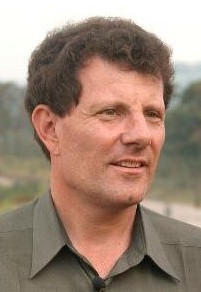by D.E. Wittkower, Evan Selinger and Lucinda Rush
 Some time has passed since Nicholas Kristof published his controversial Op-Ed “Professors, We Need You!“, and the time is ripe for us to approach the issue afresh. After briefly revisiting the controversy, we’ll offer some thoughts about how to promote public engagement by changing academic cultures and incentives.
Some time has passed since Nicholas Kristof published his controversial Op-Ed “Professors, We Need You!“, and the time is ripe for us to approach the issue afresh. After briefly revisiting the controversy, we’ll offer some thoughts about how to promote public engagement by changing academic cultures and incentives.
When Kristof’s Op-Ed came out back in February, it provoked widespread discussion about whether academics—particularly in the social sciences and humanities—are socially relevant. Much of the heat stemmed from Kristof’s biting central claim: “Some of the smartest thinkers on problems at home and around the world are university professors, but most of them just don’t matter in today’s great debates.”
Rebuttals to Kristof came swiftly and appeared in different venues.
The New York Times itself published critical responses that highlighted the existence of socially relevant academic contributions in lots of places, including “use inspired research” and “blogs, TED talks, congressional and expert-witness testimony, support of social movements, advice to foundations, consultation with museums, summer programs for schoolteachers and work with prisoners.”
This crucial point that a wider net needs to be cast for defining ‘engagement’ was expressed elsewhere, too. Undeniably, counter-examples abound, including in high profile fora. “Kristof need only open the pages of the Nation, the New York Review of Books, the London Review of Books, the Boston Review, The American Conservative, Dissent, The American Prospect.” Indeed, a recent article in The Chronicle of Higher Education suggests that there’s actually robust public academic engagement occurring. “Spend a few hours reading news and opinion pieces, surfing interesting blogs, or dipping into conference-based hashtags on Twitter, and you will find academic voices speaking out—everywhere.”
Shortly after Kristof’s piece ran, the hashtag #EngagedAcademics gained traction on Twitter. Its creator Chuck Pearson lamented that when Kristof wrote about academics he was referring to “research one schools,” and perpetuating an argument predicated upon undue, elitist assumptions: “It still assumes that academics are those pipe-smoking, office-dwelling, masses-disdaining figures from another place. In other words—as the New York Times is so prone to do, when talking about higher education—it assumes that regional universities and state colleges don’t exist. It assumes that teaching-centered liberal arts colleges don’t exist. It assumes that most church-affiliated schools don’t exist. Good heavens, don’t even speak of the community colleges. And it assumes that everyone who could possibly serve as a public intellectual is a FULLPROF or is on the path to FULLPROF status. Non-tenure-track instructors? Visiting professors? God forbid, adjuncts?”
Finally, beyond the questions over whether Kristof was missing all the action happening right in front of him, some worried that asking academics to be more relevant might very well be a tacit invitation to requesting they avoid rocking the boat with controversial assertions: “. . . if ‘relevance’ means becoming mouthpieces of our new ruling class, then Kristof can keep it.”
Read more »
Barry Schwabsky at The Nation:
